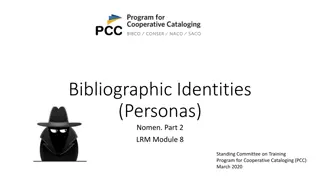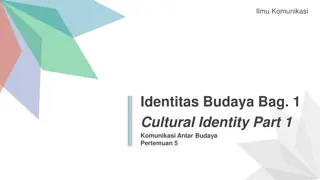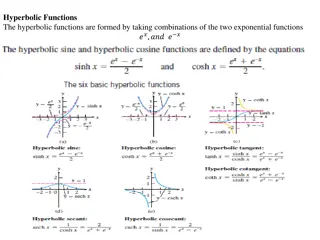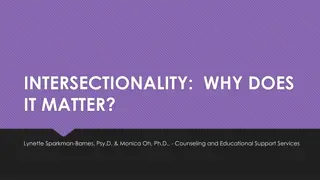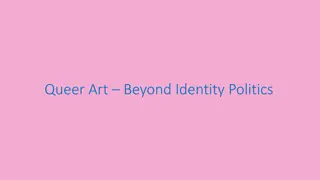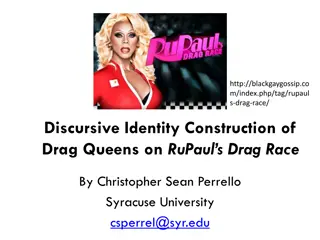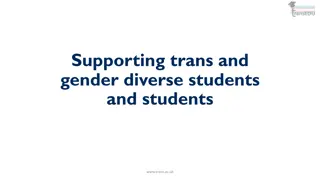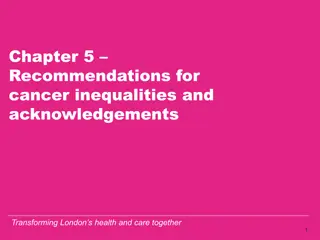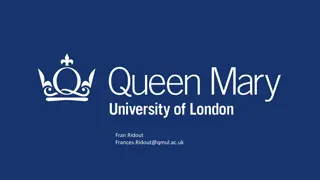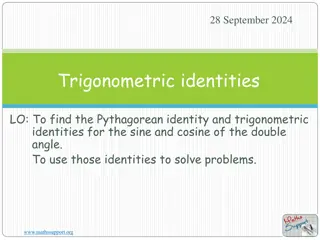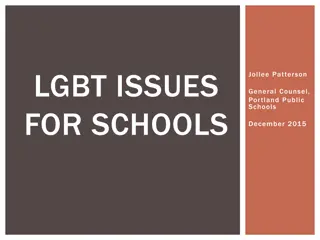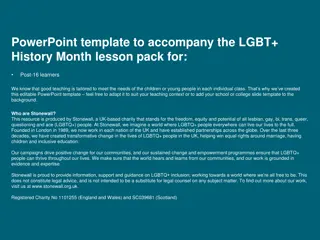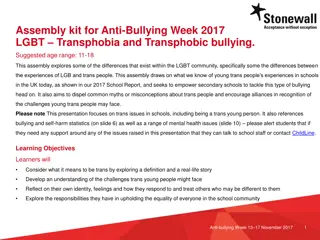LGBT+ Concepts and Identities
Exploring the diverse spectrum of gender identity, expression, sexual orientation, and biological sex, this content delves into the definitions of terms such as LGBT+, cisgender, transgender, genderqueer, and more. It provides insight into the intricacies of human identity and orientation, fostering understanding and acceptance of individual differences.
Download Presentation

Please find below an Image/Link to download the presentation.
The content on the website is provided AS IS for your information and personal use only. It may not be sold, licensed, or shared on other websites without obtaining consent from the author.If you encounter any issues during the download, it is possible that the publisher has removed the file from their server.
You are allowed to download the files provided on this website for personal or commercial use, subject to the condition that they are used lawfully. All files are the property of their respective owners.
The content on the website is provided AS IS for your information and personal use only. It may not be sold, licensed, or shared on other websites without obtaining consent from the author.
E N D
Presentation Transcript
http://medsin.org/public/images/LGBT-Activisim.jpg LGBT+ LINGUISTICS Advanced Linguistics
LGBT+ - What does is stand for? LGBT+ stands for: Lesbian Gay Bi(sexual) Trans(gender) + - Anyone who identifies outside of the LGBT acronym e.g. agender, asexual, intersex
UNDERSTANDING GENDER IDENTITY Man Woman Cisgender: An individual whose gender identity matches their sex assigned at birth. Transgender: An individual whose gender identity differs from their sex assigned at birth:- FtM: Males who were assigned female at birth MtF: Females who were assigned male at birth Genderqueer: A person who does not identify as either of the gender (male or female) any or all of the time. Non-Binary: Agender: An individual who neither identifies as male nor female. Bi/Tri/Pangender: An individual who considers themself to have two or more genders Genderfluid: An individual who moves between genders or with a fluctuating gender identity. Two-Spirit: A term traditionally used by Native American people to recognize individuals who possess qualities or fulfil roles of different genders. binaries
UNDERSTANDING GENDER EXPRESSION Feminine Masculine Androgynous: An appearance and/or identification that is neither male nor female, presenting a gender that is either mixed or neutral.
UNDERSTANDING BIOLOGICAL SEX Male Female Intersex: A term used to describe a person whose sex chromosomes, genitalia and/or secondary sex characteristics are determined to be neither exclusively male nor female.
UNDERSTANDING SEXUAL ORIENTATION Heterosexual: An individual who experiences sexual attraction to a person of the opposite gender. Homosexual: An individual who experiences sexual attraction to a person of the same gender. Bisexual: An individual who experiences sexual attraction to people of two genders. Polysexual: An individual who experiences sexual attraction to people of many genders. Pansexual: An individual who experiences sexual attraction to people of any gender. Asexual: An individual who does not experience sexual attraction to people of any gender. Skoliosexual: An individual who experiences sexual attraction to people of non- binary gender. Androsexual: An individual who experiences sexual attraction to masculinity. Gynosexual: An individual who experiences sexual attraction to femininity. Demisexual: An individual who experiences sexual attraction only once a strong emotional connection is formed.
UNDERSTANDING ROMANTIC ATTRACTION Heteroromantic: An individual who experiences romantic attraction to a person of the opposite gender. Homoromantic: An individual who experiences romantic attraction to a person of the same gender. Biromantic: An individual who experiences romantic attraction to people of two genders. Polyromantic: An individual who experiences romantic attraction to people of many genders. Panromantic: An individual who experiences romantic attraction to people of any gender. Aromantic: An individual who does not experience romantic attraction to people of any gender. Skolioromantic: An individual who experiences romantic attraction to people of non-binary gender. Androromantic: An individual who experiences romantic attraction to masculinity. Gynoromantic: An individual who experiences romantic attraction to femininity. Demiromantic: An individual who experiences romantic attraction only once a strong emotional connection is formed.
CANYOUAPPLYTHESELABELSTOYOURSELF? Genderbread Person outline: gender identity gender expression biological sex sexual orientation romantic attraction Why do we need labels? Can we have a separate speech community based on our labels?
J.L. AUSTIN (1976) Language is performative; a shared way of speaking can be used to create a single, cohesive identity that in turn organises political struggle. Sexuality is one form of social identity, discursively constructed and represented Gay men and lesbians may, through the use of language, form speech communities. A speech community is a community that shares linguistic traits and tends to have community boundaries that coincide with social units. Membership in speech communities is often assumed based on stereotypes about the community as defined by non-linguistic factors. Speakers may resist culturally dominant language and oppose cultural authority by maintaining their own varieties of speech. Language use can also mimic culturally dominant forms or stereotypes.
CODE SWITCHING Changing speech styles, or code switching, can indicate which identity individuals want to put forward as primary at a given time. Choices of language use among gay men depend on the audience and context, and shift depending on situational needs such as the need to demonstrate or conceal gay identity in a particular environment. Exploratory switching can be used to determine whether an interlocutor shares the speaker's identity. E.g. a gay man might use certain key words and mannerisms generally known by the community as a test to see whether they are recognized by the interlocutor. This allows the gay man to establish solidarity with a community member previously unknown to him without having to disclose his orientation to a heterosexual and potentially hostile person.
POLARI A secret language used by homosexual men (particularly in the 1960s) with certain terminology used to refer to things/people: Polari Term Betty bracelet Camp Cottage Mince Naff Meaning Policewoman Effeminate Public Toilet A camp walk Awful (Not Available For Fucking) Make-Up Slap
WHATDOYOUTHINKTHESE POLARI TERMSMEAN? Chicken Fruit Glossies Hoofer Lallies Trade Willets
KULICKS ARGUMENT The search for a link between sexual identity categories and language is misplaced, since studies have failed to show that the language gay men and lesbians use is unique.
GAY MEN & FEMALE STEREOTYPES (1970S): Robin Lakoff gay men deliberately imitate women s speech features including: Increased use of superlatives Emphatic adjectives e.g. divine Inflected intonation Lisping David Crystal gay male speech is effeminate (simpering voice) with a wider pitch-range than heterosexual men, more frequent use of complex tones (e.g. fall-rise/rise-fall) and switching to a falsetto register
KEY QUESTIONS: Why has there been so much talk of gay men in relation to other LGBT+ identities? Do you think that lesbians, bisexual and trans* people have (stereotypical) speech communities? Do you completely refute the claim that LGBT+ people would have a speech community? How can you compare to other minorities? Do you think that gay men used to have a speech community but that this has been eroded due to liberalism in society allowing more than the stereotype?
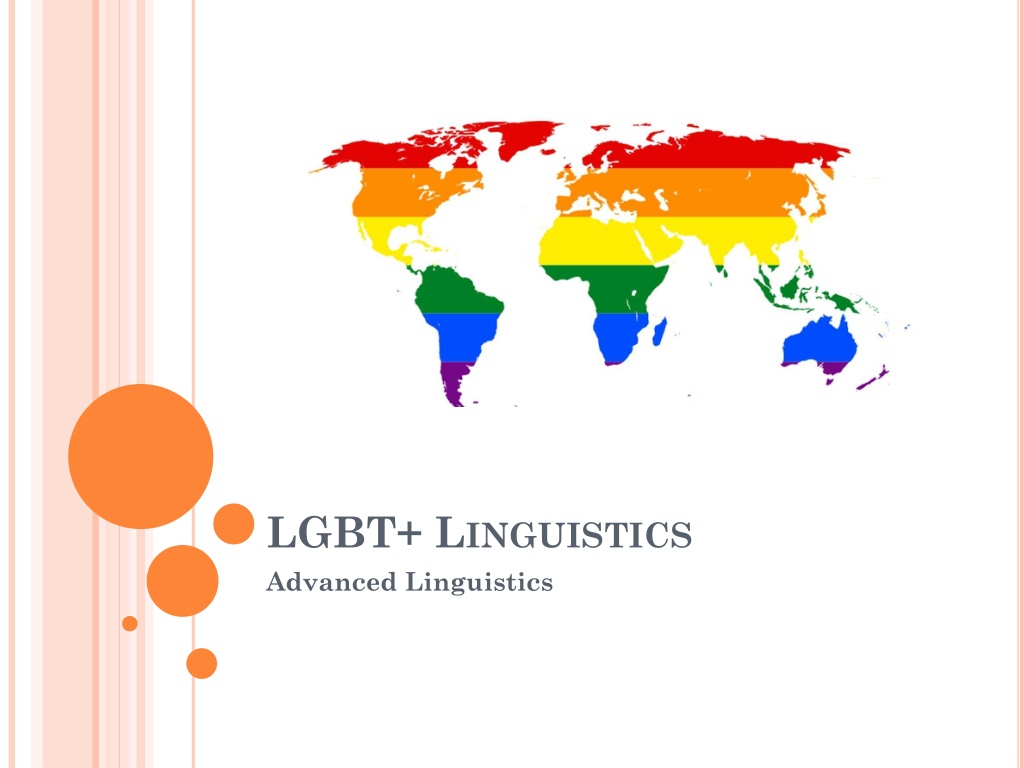
 undefined
undefined



























